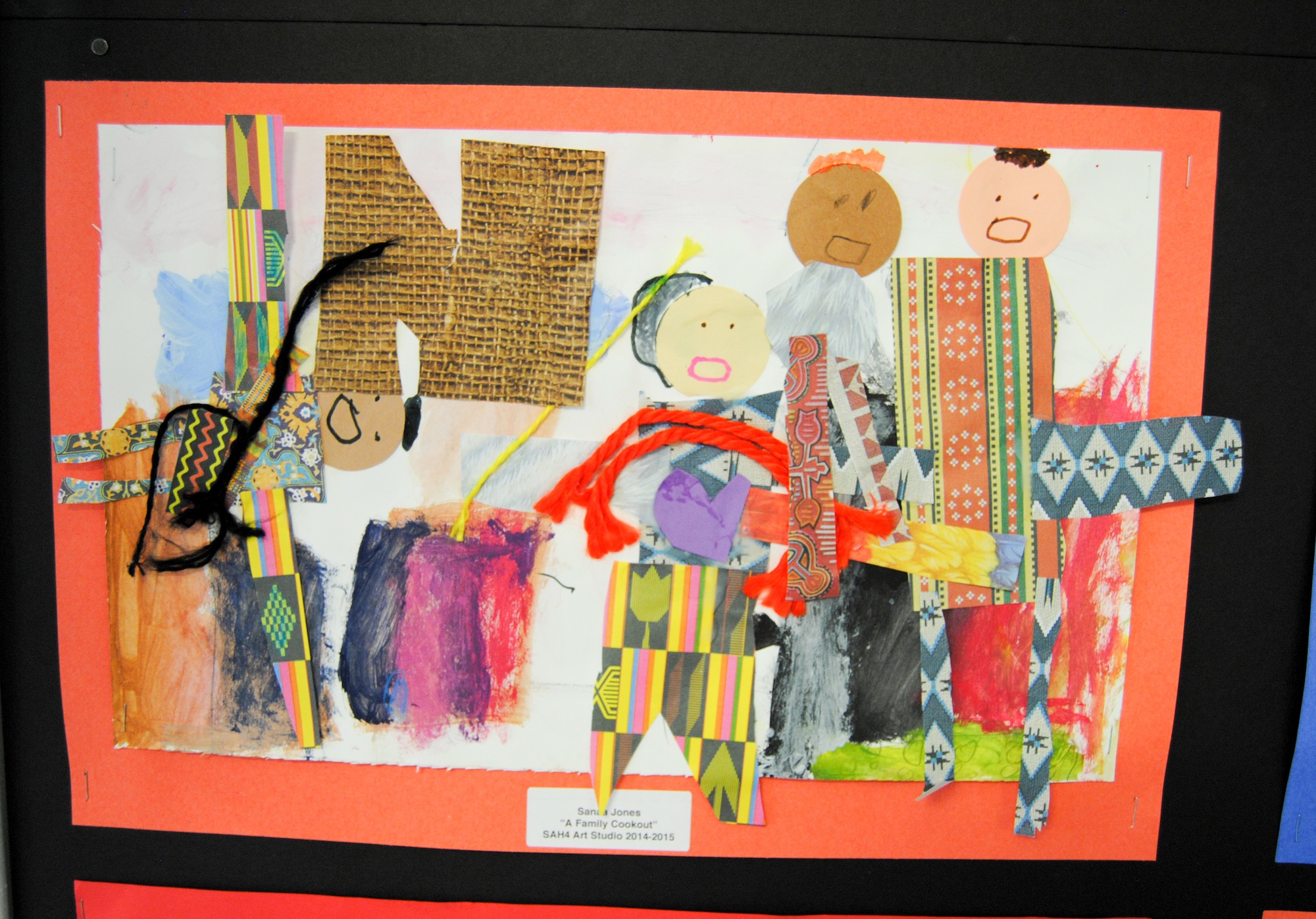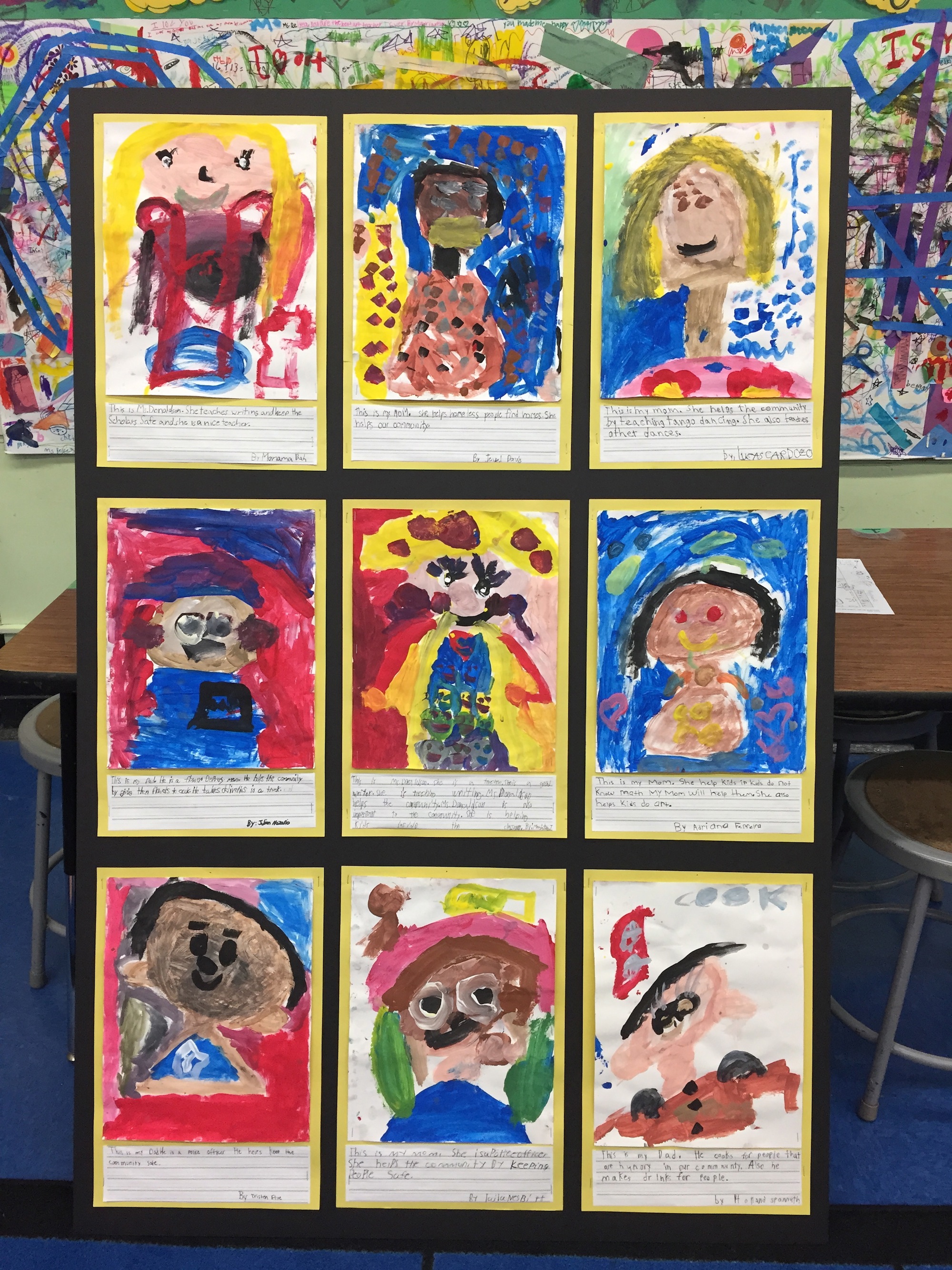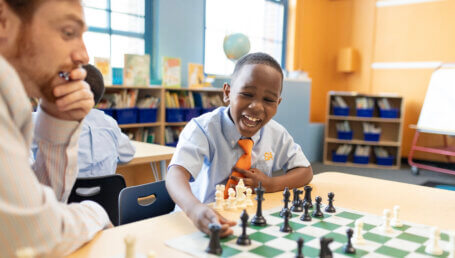
No one connects Vincent van Gogh with sociology or the study of community, but that’s exactly how the first graders at Success Academy Harlem 4 used paintings by the eccentric Post-Impressionist Dutch artist in a recent exercise aimed at getting them to recognize the contributions made by various members of their communities.
To help my scholars make this connection, I started by introducing them to Joseph Roulin, a postal worker in the French town of Arles who became a good friend of Van Gogh’s in the late 1800s. Van Gogh loved to paint Roulin, and his portraits of the postman in uniform became a favorite of the students. In fact, at this year’s First Grade Art Show, the community portraits that emerged from the study were among the most talked-about pieces on display.
At Success Academy, the arts are not simply held in high regard and studied rigorously; they are showcased proudly for all to see. For the art show, we invited school staff and families into our art studio to see the hundreds of art pieces that our first graders produced this year. In addition to painting their community portraits, our young artists created collages with geometric shapes, built their own dream playground using recycled materials like cardboard and straws, created monotype symmetrical prints, and made paintings of a special memory to tell a story.
At Success Academy, the arts are not simply held in high regard and studied rigorously; they are showcased proudly for all to see.
Van Gogh’s work truly inspired our scholars. After studying his portraits of Roulin, my first graders discussed someone in their own lives who has an important job in the community. Most of them talked about family members. Jewel shared that her mom helps homeless people find homes. Tristen noted that his dad is a police officer who works to keep the community safe. Arhiya focused on her grandfather who works as a school crossing guard. “(Without him), people will get hurt,” she said. I was so proud of my first graders for making these connections and recognizing that their loved ones are improving their communities.
Their next step was transferring that special person onto paper. Each artist worked to portray a figure in uniform, including details like badges, hats, jackets, and glasses; these were what we referred to as “the clues” about what each subject’s role was in the communities. Finally, the scholars wrote descriptions of the special persons they had painted, explaining why their subjects are important. Mariama, who painted a portrait of her teacher, Ms. Donaldson, explained the importance of her job, saying, “She teaches me writing and keeps scholars safe.” Many of the descriptions made me smile. “This is my dad,” Julian wrote beneath the portrait of a man in a blue uniform with a badge. “He is a flower deliveryman. He helps the community by giving them flowers.”
It is clear to me that our scholars are becoming true artists. They embrace their individuality by making artistic choices and working with each other to make their own work stronger. Their creativity and imagination continue to amaze me. I’m proud as an art educator to be able to facilitate this kind of learning every day. It is why I love my job.









